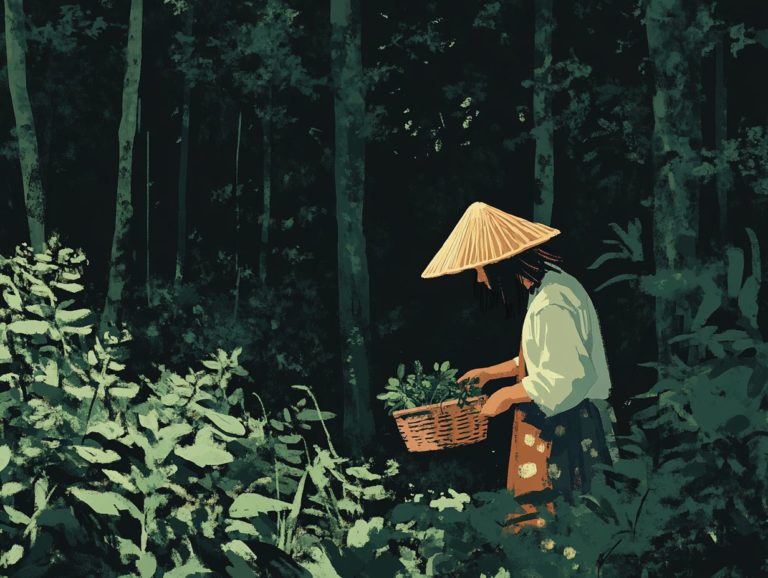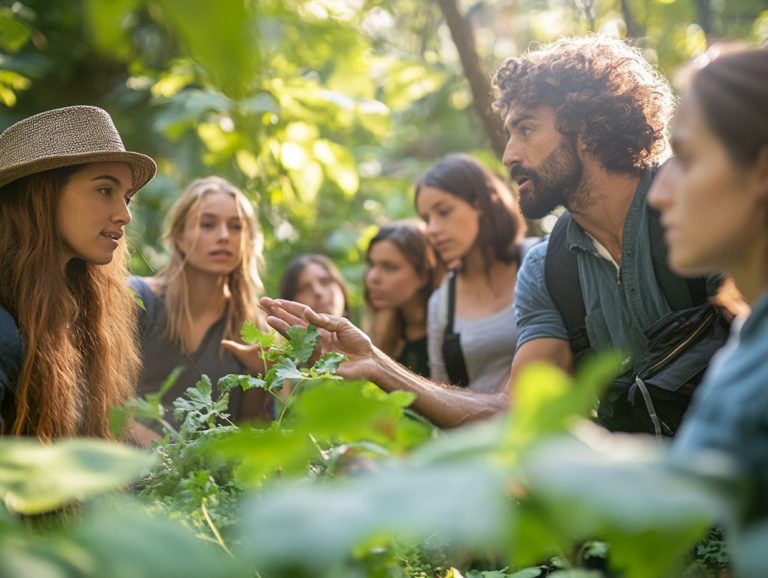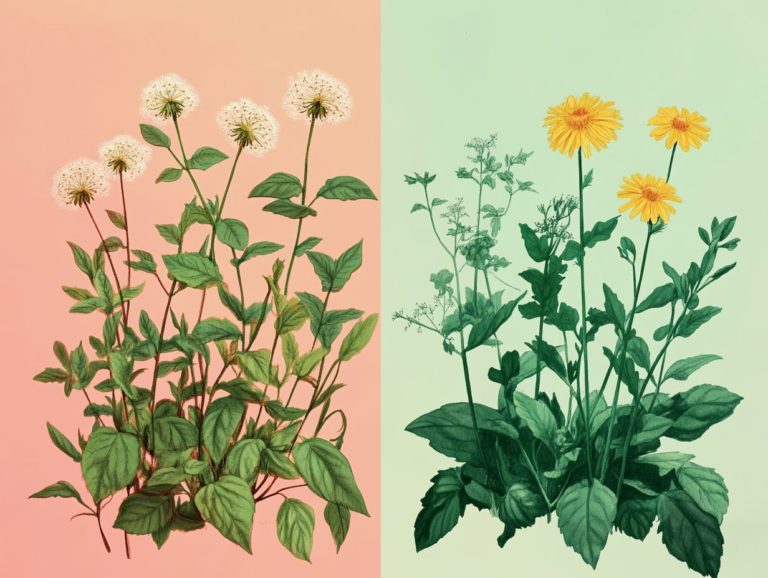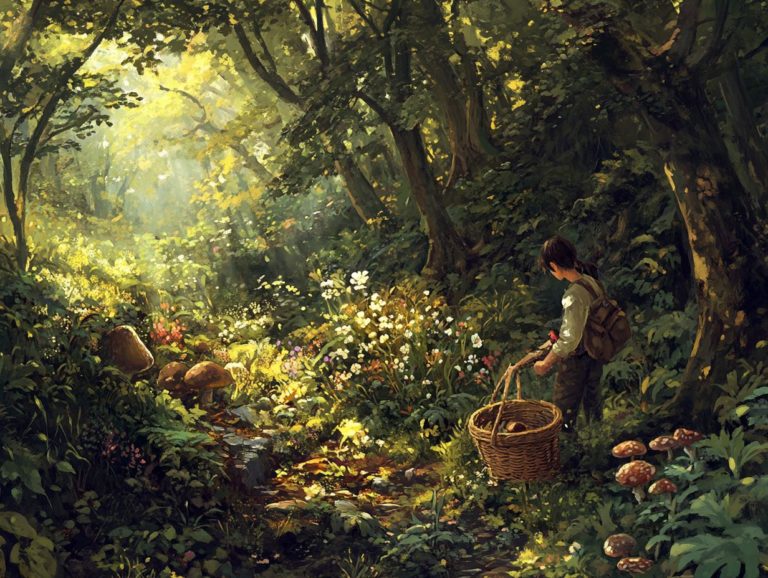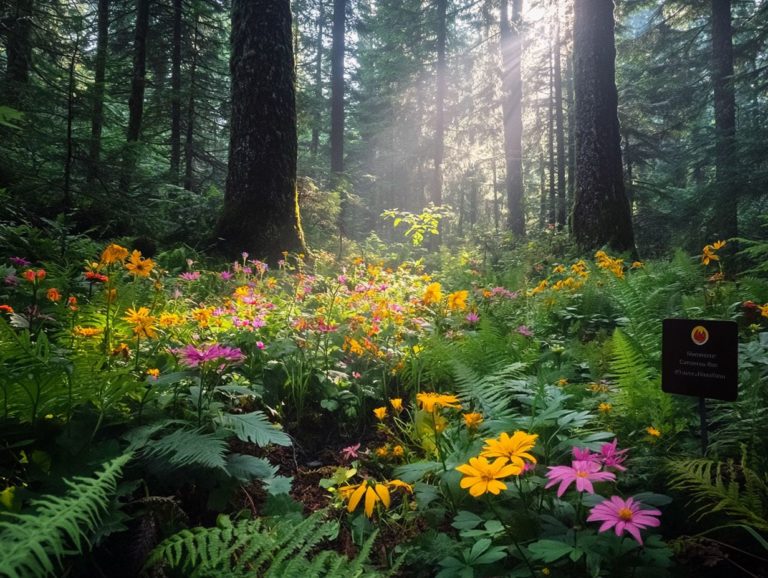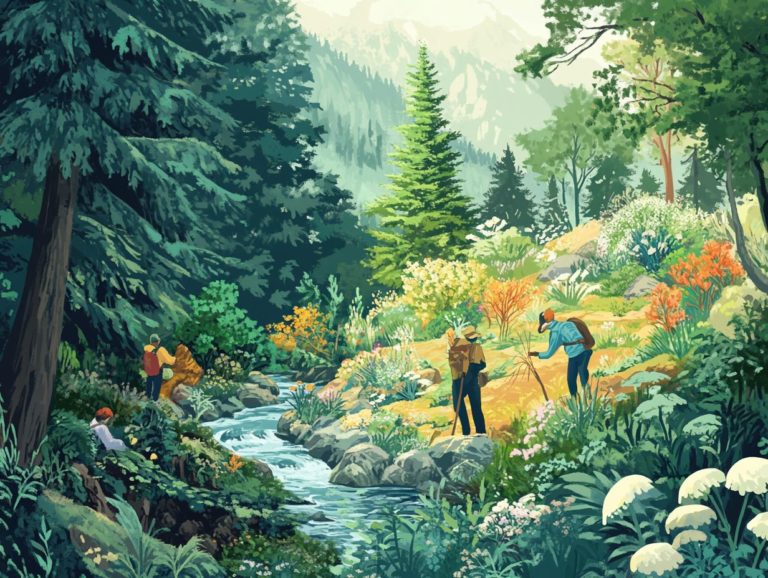Understanding the Ecosystem Impact of Foraging
Foraging plays a pivotal role in sustaining the delicate balance of ecosystems, shaping everything from species interactions to overall biodiversity.
This article invites you to explore the definition and significance of foraging. It sheds light on the diverse methods and strategies that different organisms employ. It also examines both the positive and negative impacts of foraging on ecosystems, delving into its connection with species diversity and how sustainable practices can alleviate potential adverse effects.
Embark on this journey as you uncover the future of foraging and the challenges it faces in fostering ecological health.
Contents
- Key Takeaways:
- The Role of Foraging in Ecosystems
- Types of Foraging
- Impact of Foraging on Ecosystems
- Foraging and Biodiversity
- Sustainable Foraging Practices
- Future of Foraging
- Frequently Asked Questions
- What is foraging and how does it impact the ecosystem?
- How does foraging affect plant populations?
- What is the role of foraging in maintaining biodiversity?
- How does foraging impact animal behavior?
- Does foraging have any negative effects on the ecosystem?
- How can we ensure sustainable foraging practices?
Key Takeaways:
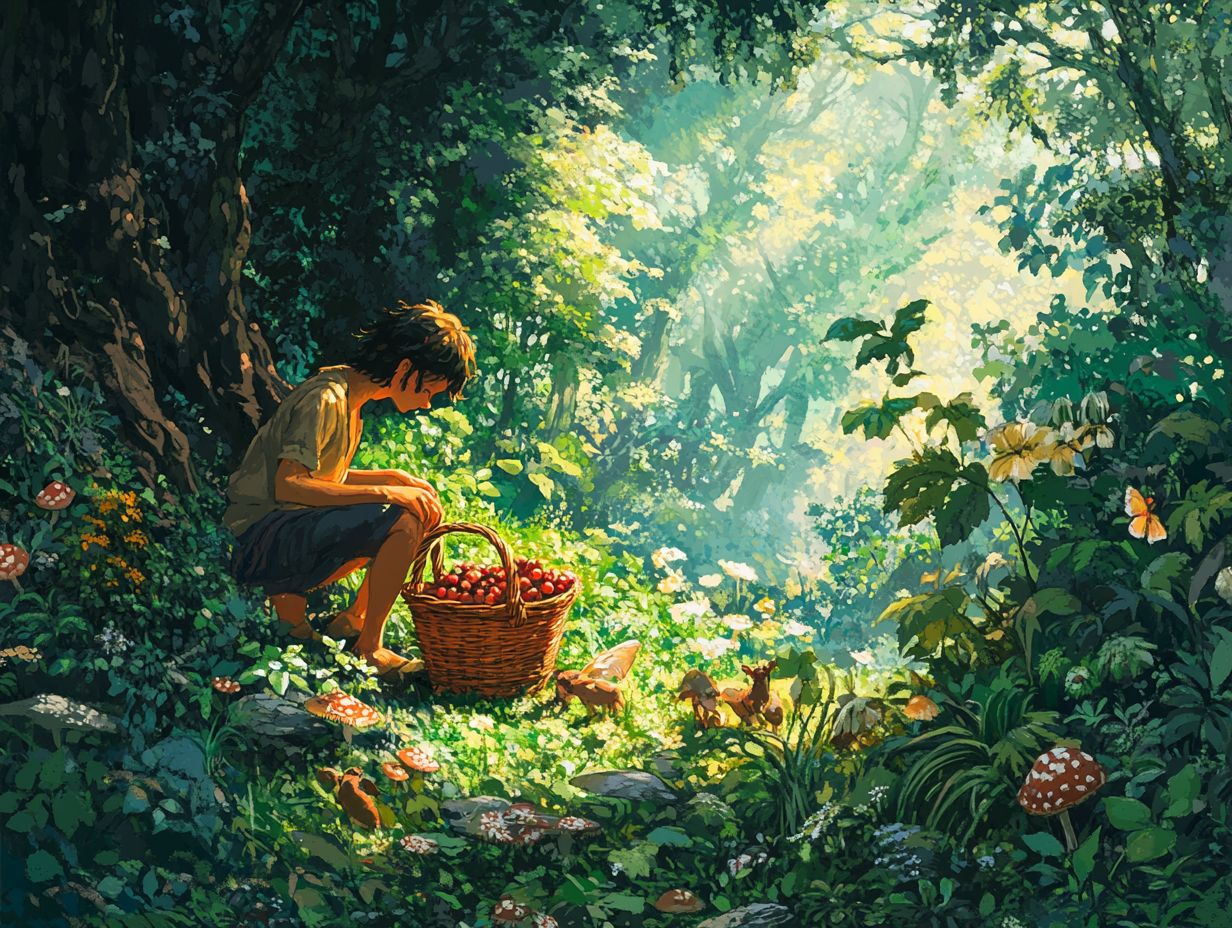
- Foraging plays a crucial role in maintaining balance and diversity in ecosystems by distributing resources among different species.
- There are various types of foraging, each with its own methods and strategies, which can have both positive and negative impacts on ecosystems.
- To maintain biodiversity and ensure a sustainable future for foraging, it is important to practice responsible foraging and minimize negative impacts on ecosystems.
The Role of Foraging in Ecosystems
Foraging is vital in maintaining healthy ecosystems and bridging the gap between human interaction and the natural world. It promotes biodiversity and fosters ecological conservation.
By sourcing wild edibles, you’ll not only reduce your carbon footprint but also enjoy the thrill of discovering tasty wild foods while supporting local ecosystems through sustainable practices. As urban development increasingly encroaches on wild spaces, grasping the importance of foraging is essential not only for food security but also for safeguarding our planet s natural resources against the mounting challenges of climate change.
Definition and Importance
Foraging is the art of seeking out and gathering wild food sources, encompassing everything from edible plants to mushrooms. It offers a sustainable alternative to conventional food production methods.
Historically, foraging was an essential survival skill for our ancestors, who depended on the natural world to fulfill their dietary needs long before agriculture took root. In today s world, foraging allows you to reconnect with nature while embracing a sustainable cuisine that highlights seasonal and local foods.
This practice is intricately linked with traditional ecological knowledge, as various cultures have handed down invaluable insights about the edible flora and fauna in their surroundings. By embracing these age-old practices, you can help preserve biodiversity, enhance food security, and cultivate a deeper appreciation for the environment and its abundant offerings.
Types of Foraging
You ll discover a captivating array of foraging types, each offering unique methods and strategies for identifying and harvesting wild foods. From delectable plants to elusive mushrooms, each foraging adventure enriches your natural diet and connects you with the bounty of the wild.
Methods and Strategies
Effective foraging requires a keen understanding of local vegetation and awareness of seasonal changes. It also involves strategies that minimize ecological impact and foster community connections.
To truly master the art of foraging, engage in ongoing observation of the shifting seasons, as they significantly influence the availability and growth patterns of various plants. Recognizing which species flourish in specific conditions relies on your ability to discern subtle environmental cues, enhancing your skill in accurately identifying edible flora.
Ethical foraging requires you to strike a balance between harvesting and conservation. This means knowing the right time to gather, avoiding certain areas to allow plant populations to regenerate, and actively promoting the growth of native species. By embracing these practices, you contribute to a sustainable ecosystem that benefits both you and the environment.
Impact of Foraging on Ecosystems
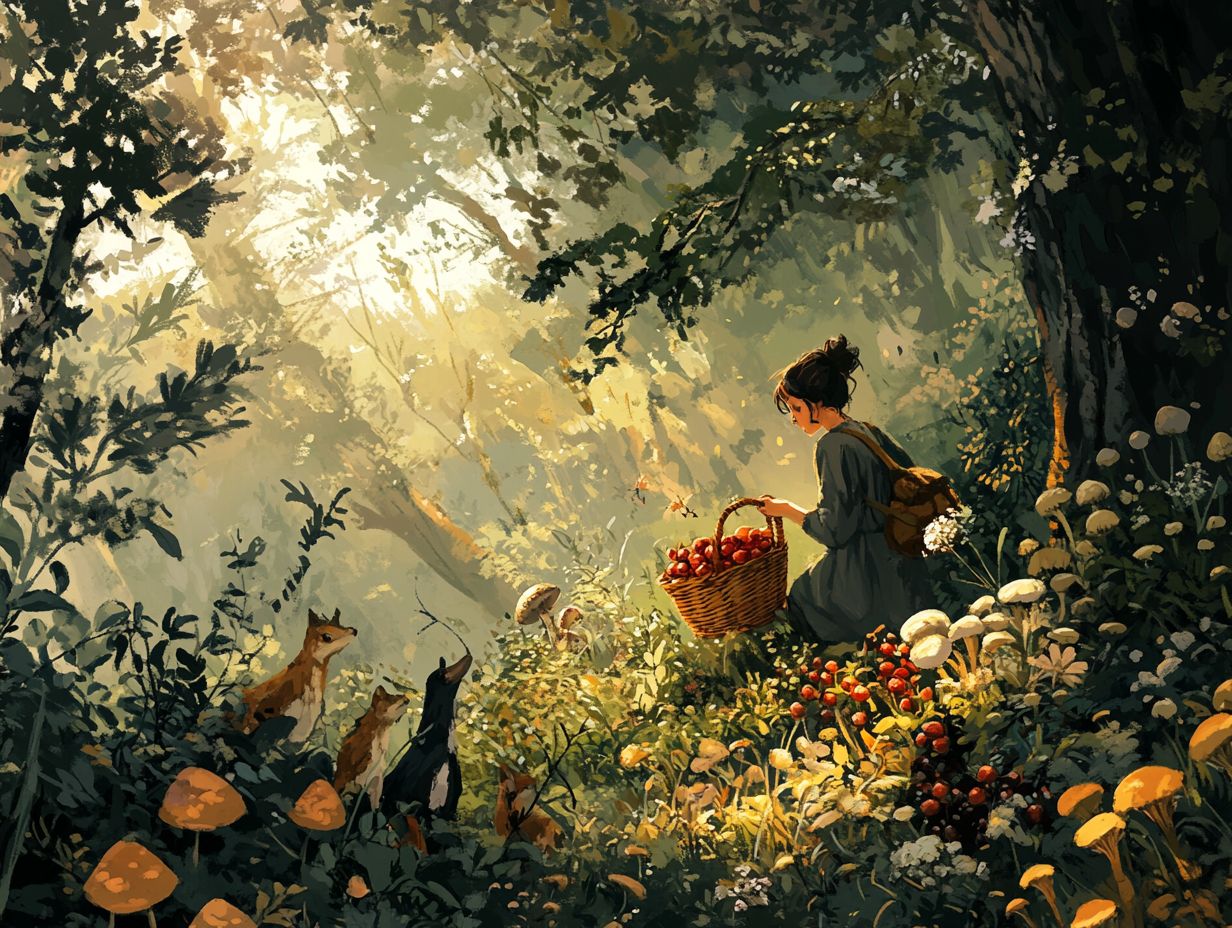
Foraging can have both beneficial and detrimental effects on ecosystems. It shapes biodiversity, soil health, and the balance of natural cycles, making it important to understand the environmental impacts of foraging.
These elements contribute to efforts in mitigating climate change, emphasizing the need to understand the environmental impacts of foraging activities.
Positive and Negative Effects
The positive effects of foraging are impressive. It enhances biodiversity, improves ecological health, and helps reduce greenhouse gas emissions. However, be aware of the negative consequences that can arise from unsustainable practices, which may lead to species extinction.
Incorporating foraging into local food systems promotes nutritional diversity. It gives you access to a wider range of natural foods while connecting you to your environment. For instance, foraging for wild herbs and edible plants can enrich your diet with essential micronutrients often missing from conventional agricultural products.
Be mindful of potential downsides like overharvesting. This practice can threaten local plants, disrupt fragile ecosystems, and worsen problems like habitat loss. Striking a balance between sustainable foraging and biodiversity preservation is crucial for long-term ecological health, ensuring these valuable resources remain available for future generations.
Foraging and Biodiversity
Foraging is an exciting way to connect with nature and boost biodiversity. It fosters a strong bond between individuals and the natural world. This practice not only promotes species diversity but also supports ecological conservation efforts, effectively countering threats posed by invasive species.
Relationship between Foraging and Species Diversity
The connection between foraging and species diversity is vital for maintaining ecological health. By embracing diverse food sources, you enhance resilience to environmental challenges and support food sovereignty, which means having control over the food you grow and eat.
As you explore the variety of edible plants, mushrooms, and other resources, you become more attuned to your local environment. This fosters a deeper appreciation for unique ecosystems. Foraging enriches your diet and revitalizes traditional knowledge about local flora and fauna, preserving cultural identities.
Foraging nurtures a sense of community and collaboration. Individuals share their discoveries and techniques, allowing you to reclaim autonomy over food systems. This promotes sustainable practices that contribute to biodiversity and ecological balance.
Sustainable Foraging Practices
Embracing sustainable foraging practices is crucial for minimizing adverse effects on ecosystems while meeting your dietary needs. This approach conserves biodiversity and safeguards natural resources for future generations.
How to Minimize Negative Impact on Ecosystems
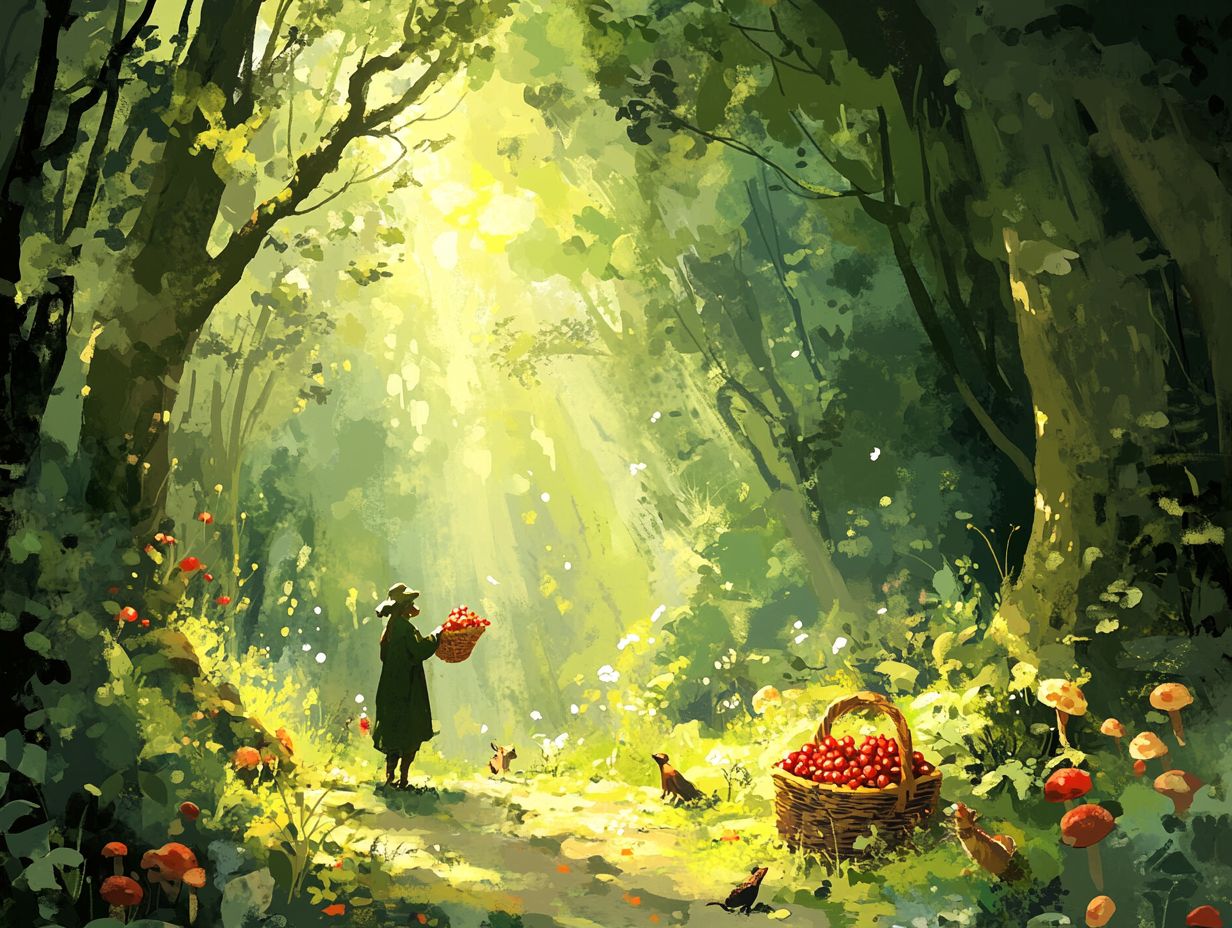
To minimize negative impacts on ecosystems, adopt sustainable foraging practices. This includes reducing food waste, preventing soil erosion, and preserving local biodiversity.
Carefully select harvesting locations and only take what you need. This helps maintain the delicate balance of these habitats. Educate yourself on native species and their growth cycles to enhance your understanding of the environment and promote responsible collection methods.
Use biodegradable bags for collection and avoid single-use plastics to support environmental health. Joining community foraging groups allows you to share knowledge and foster collective responsibility. Encourage stewardship and advocate for conservation efforts that protect the rich ecosystems upon which we all depend.
It’s essential to act now to preserve our ecosystems!
Join a community foraging group today and start your journey toward sustainable foraging!
Future of Foraging
The future of foraging presents a complex landscape marked by challenges such as urban development and environmental harm. Yet, within these obstacles lie opportunities for sustainable practices that not only bolster food security but also foster community building.
Embracing these possibilities can lead to a more resilient and interconnected way of sourcing food.
Challenges and Solutions for Sustainable Foraging
Sustainable foraging faces its share of challenges, particularly environmental harm from large-scale farming and the encroachment of invasive species. You can foster resilience and promote biodiversity through solutions like community building and education.
You may also face limited access to land and resources essential for foraging. Displacement from traditional foraging areas and regulatory constraints can impede your ability to connect with nature and cultivate local relationships.
To overcome these challenges, engaging with your community is vital. Create platforms where foragers can exchange knowledge and develop skills collaboratively. Educational initiatives can deepen your understanding of sustainable practices, enabling you to navigate the complexities of local ecosystems and advocate for the protection of these invaluable resources.
By weaving together these exciting community-driven initiatives, you can help establish a robust foundation for resilience.
Frequently Asked Questions
What is foraging and how does it impact the ecosystem?
Foraging is the act of searching for and obtaining food in the wild. It can significantly impact the ecosystem, as it affects the distribution and abundance of plant and animal species.
How does foraging affect plant populations?
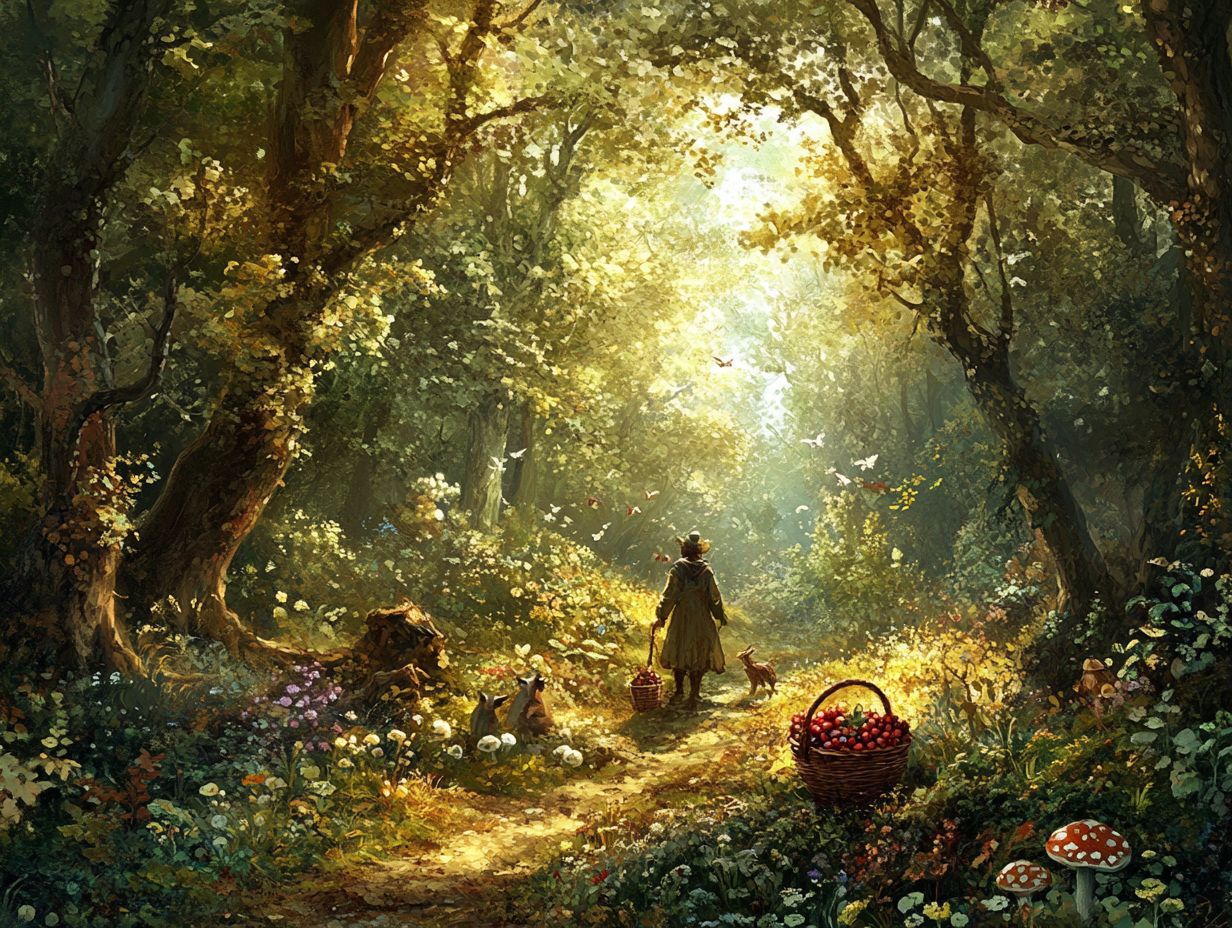
Foraging can have both positive and negative impacts on plant populations. Some herbivores play a crucial role in seed dispersal and pollination, while others can harm plants through overgrazing.
What is the role of foraging in maintaining biodiversity?
Foraging is an essential component of ecosystem functioning and contributes to maintaining biodiversity. It helps support a balance between different species, preventing any one species from becoming dominant.
How does foraging impact animal behavior?
Foraging behavior is vital for an animal’s survival and can influence their behavior in various ways. Animals may change their feeding patterns or migrate to different locations to find food.
Does foraging have any negative effects on the ecosystem?
While foraging is a natural and necessary process, it can also have negative consequences on the ecosystem if not managed properly. Overgrazing, over-harvesting, and introducing invasive species through foraging can harm the ecosystem.
How can we ensure sustainable foraging practices?
Sustainable foraging practices involve careful management and monitoring of foraging activities to minimize negative impacts on the ecosystem. This can include setting limits on the amount of foraging allowed in an area, rotating grazing locations, and using sustainable harvesting methods.

